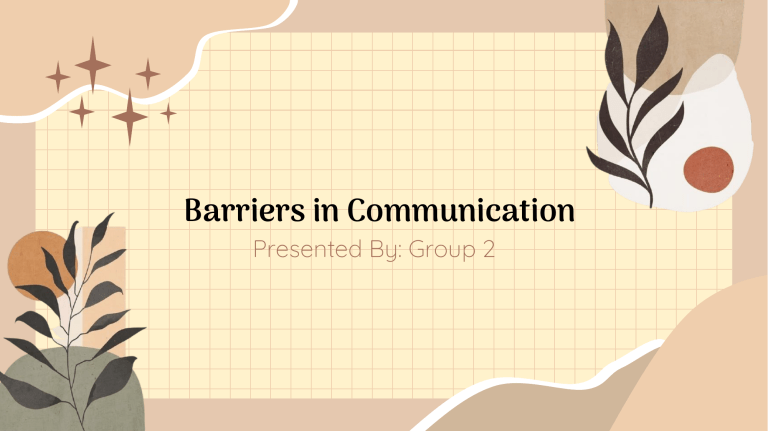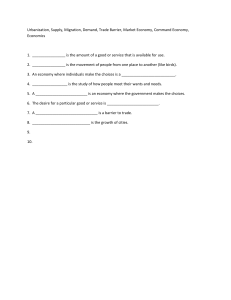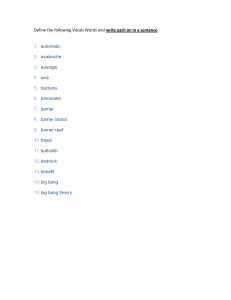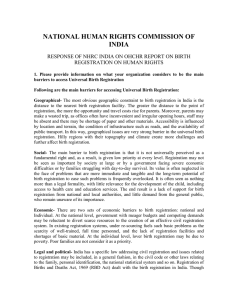Communication Barriers: Presentation on Effective Communication
advertisement

Barriers in Communication Presented By: Group 2 Flow of the Discussion 1 Introduction to Barriers of Communication 2 Mispronunciation 3 Meaning attached to words 4 The loose and haphazard organization of ideas in Extended talk 5 Sudden Shift in topic Flow of the Discussion 6 The Lack of Shared Presupposition 7 Interlocutors 8 Delivery of the Message 9 Situation or Setting Introduction Communication barriers are something that prevents us from correctly getting and accepting the messages others use to communicate their information, thoughts and ideas. Mispronunciation Second Barrier of Communication The loose and haphazard organization of ideas in extended talk First Barrier of Communication Meanings attached to words Third Barrier of Communication Sudden Shifts on the Topic Fifth Barrier of Communication Fourth Barrier of Communication Lack of Shared Presupposition Mispronunciation The act of pronouncing a word or sound wrongly. Among Filipinos, there are sounds in English which are considered critical. Thus, they are hard to pronounce which eventually results in mispronunciation. (ex. mop and map) Meaning attached to words There are words which give denotative and connotative meanings. DENOTATION: The direct definition of the word that you find in the dictionary. CONNOTATION: The emotional suggestions of a word that is not literal. Ex. Home Denotes : house, apartment or other shelter Connotes: the place in which one’s domestic affections are centered. The loose and haphazard organization of ideas in extended talk When ideas presented are loosely incoherent, listeners will not be able to connect and understand the message. This will eventually result in losing the attention of the audience. Sudden shifts in topic Changing topics during extended talks can hamper communication. It is always encouraged to use transitional devices to allow the audience to follow and process a presentation or speech more effectively. The lack of shared presupposition Both parties need to have background knowledge of the topic at hand. When the other does not have it, miscommunication will surely creep in. Another Barriers of Effective Communication 1. Interlocutors 1. Delivery of the Message 1. Situation or Setting Another Barriers of Effective Communication Interlocutors: - The source and the recipient of the message. This is mainly psychological in nature. - One takes more kindly the feedback given by persons he or she likes and admires.On the other hand one negatively reacts and resists accepting a message given by a person he or she dislikes. - One’s reactions to a message are conditioned to some extent by the opinion of and feelings for the sender of the message. Moreover, emotions influence much on the way a message is worded during interaction. Another Barriers of Effective Communication Delivery of the message - The volume of one’s voice and the rate of speaking, pacing, could have an effect on the intelligibility and clarity of the message. Another Barriers of Effective Communication Situation or Setting - Physical noise is likely to distort the message or render it incomprehensibly. The size of the room and the size of the audience are other situation-related factors that could impede effective communication. Thank You Any question?




